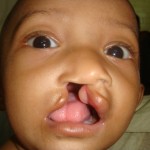
The causes of non- syndromic orofacial clefts (NSOFC) are multifactorial involving both genetic and environmental risk factors.
A positive association has been shown between maternal smoking and NSOFC, so the aim of this review was explores the relationship between maternal passive smoking and NSOFC, and compare the associations between passive and active smoking.
Methods
Searches were conducted in the PubMed, Scopus and Google Scholar databases. Case-control, cohort or cross-sectional studies where there was a control or comparison group reporting passive smoking and its relationship to NSOFC were considered. Two reviewers carried out study selection data abstraction and quality assessment independently. The Newcastle-Ottawa Scale was used for the quality assessment. Meta-analysis meta-regressions and sensitivity analysis were conducted.
Results
- 15 retrospective case-control studies sing self-report questionnaires for non-smoking mothers were included.
- 14 studies contributed to the meta-analysis. 11 had a low risk of bias and 3 a moderate-to-high risk
- Maternal passive smoking exposure was associated with a twofold increase in risk of NSOFC OR= 2.11, (95% CI: 1.54-2.89);
- For cleft lip with and without palate OR=2.05, (95% CI: 1.27-3.3)
- For cleft palate OR=2.11, (95% CI: 1.23-3.62).
- There was substantial heterogeneity between studies. In the studies that provided data enabling crude and adjusted odd ratios to be compared, adjustment for potential confounders attenuated the magnitude of association to about a 1.5-fold increase in risk.
- Meta regression found that the association between passive smoking and NSOFC varied by study quality, region but not cleft type. The magnitude of the association is lower in studies appraised as of good quality than in other studies and higher for Asian studies.
Conclusions
The authors concluded: –
Overall, maternal passive smoking exposure results in a 1.5 fold increase in risk of NSOFC, similar to the magnitude of risk reported for active smoking, but there is marked heterogeneity between studies. This heterogeneity is not explained by differences in the distribution of cleft types, adjustment for covariates, broad geographic region, or study bias/quality. This thorough meta-analysis provides further evidence to minimize exposure to environmental tobacco smoke in policy making fora and in health promotion initiatives.
Comments
This well-conducted review shows a link between passive smoking and NSOFC. Interestingly, the link was higher than that reported for active smoking (OR = 1.5, 95% CI: 1.17 to 1.93); the authors consider that this might be due to under-reporting of active smoking or possibly longer exposure of those suffering from passive smoking. This study adds weight to those wishing to minimise exposure to environmental tobacco.

“@TheDentalElf: Passive smoking: linked with orofacial clefts http://t.co/65mNI47DL5” interesting results
Passive smoking: linked with non-syndromic orofacial clefts http://t.co/I55GAszn7b
@Schisisteam @Wdekanter Wanted to share. “@TheDentalElf: Passive smoking: linked with orofacial clefts http://t.co/F7Jt7xhaib”
Don’t miss: Passive smoking: linked with orofacial clefts http://t.co/IPHr5furvq #EBP
Passive smoking: linked with non-syndromic orofacial clefts – The Dental Elf http://t.co/9OBZRranRg #dentists #clefpalate
Do your pregnant patients know this? http://t.co/A30tDYpDeu #dentists http://t.co/CSkyrq33gL
[…] Dental Elf – 24th Mar 2015 – Passive smoking: linked with non-syndromic orofacial clefts […]